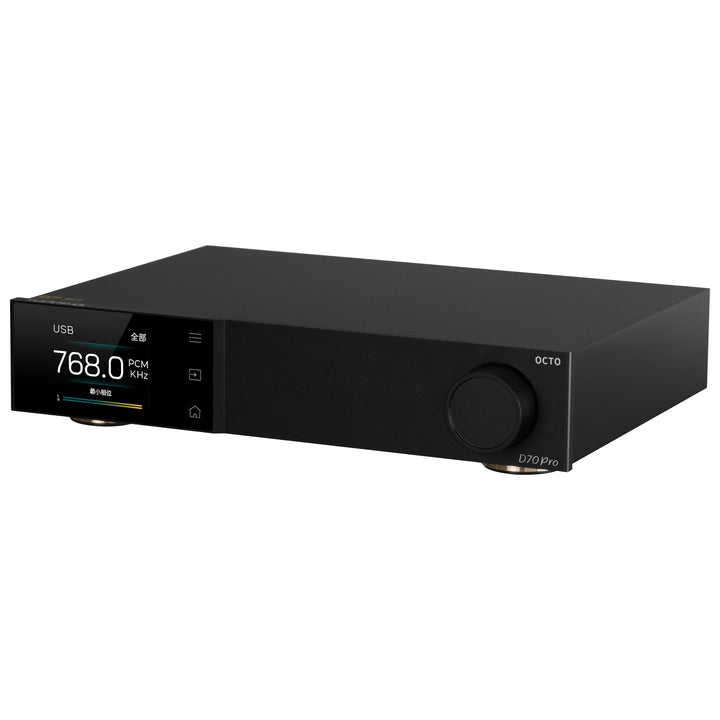

The D70 Pro OCTO is equipped with 8 Cirrus Logic flagship chips: CS43198. It supports up to PCM768kHz/32bit and DSD512 audio, bringing you a superior audio experience across many audio formats.
The full color touch screen and touch buttons enhance the user experience with A70 Pro. You can display playback information, FFT, and VU meters. Customizations are available with a simple press of the knob.
D70 Pro OCTO supports LDAC/aptX Adaptive/aptX HD/AAC/SBC audio encoding, allowing high quality audio to be transmitted wirelessly for a better sound experience.
D70 OCTO has wide compatibility and can be used on multiple operating systems, such as Windows 10, Windows 11, MacOS, Linux, iOS, and Android. Simply connect the audio source via a digital connection and you can use it immediately. (Some Windows systems may require driver installation).
The D70 Pro OCTO features single-ended RCA and balanced XLR output. You can turn on RCA or XLR by itself, or output to both at the same time. This provides flexibility for a variety of setups and uses.
In addition to standard 2V/4V RCA and XLR output, D70 Pro adds XLR 5V and RCA 2.5V output options to increase compatibility with pro audio and other device standards.


The title says it all.
This DAC is tonally open and fast, but still expressive. It has great soundstage space, including separation left-right and palpable depth.
It has the 'blackest background' I've heard (though it IS silent regarding noise floor, this effect is more about spatial separation of elements.)
I previously was using the Topping E70 Velvet, which I had thought was remarkable and top of class. When I heard the Octo at full capability, the E70 Velvet was displaced, though not quite embarrassed.
--------
IMPORTANT NOTE:
This DAC absolutely needs a few hours of burn-in (don't tell me burn in isn't real - keep it to yourself).
Oddly, when I first used it, I was very concerned because it sounded harsh and congested in the lower mids. Within about two hours of use, the sound had changed completely. The congestion and fraying harshness were gone entirely, and the sound signature was wonderfully open, accurate, fast, and not remotely euphonic (I HATE euphonic.)
Lesson learned: don't judge the sound from the first usage. Let it run a while and then enjoy listening.
- Colin



